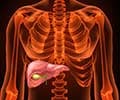Vulvovaginal symptoms
are extremely common in clinical practice. The symptoms of vaginitis are nonspecific; neither self-diagnosis nor diagnosis by a physician is reliable without laboratory confirmation. Regrettably, the management of this disorder remains largely empirical,
The normal vaginal epithelium cornifies under the influence of estrogen, thereby protecting women against infection from a number of pathogens. In contrast, the endocervix is lined with columnar epithelium and is more susceptible to infection with certain pathogenic organisms. These differences explain in part why cervicitis occurs in the absence of vaginitis and vice versa.
Vaginal discharge can be a normal finding in many women. This physiologic discharge (leukorrhea) is formed by mucoid endocervical secretions in combination with sloughing epithelial cells and normal bacteria. The discharge may become more noticeable at times, for example during pregnancy, oral contraceptive use, or mid-menstrual cycle, close to the time of ovulation. The pH of these normal vaginal secretions is 4.0 to 4.5; microscopic examination reveals a predominance of squamous cells compared with polymorphonuclear leukocytes (PMNs)
Causes of Vaginitis
Summarized in table 1




